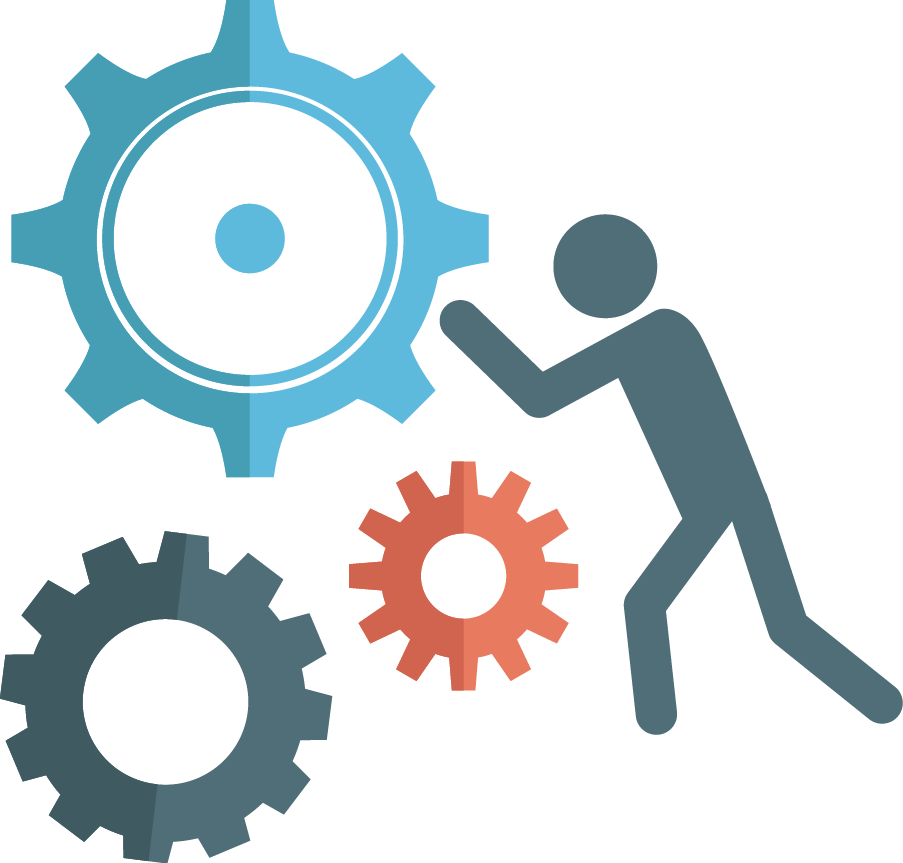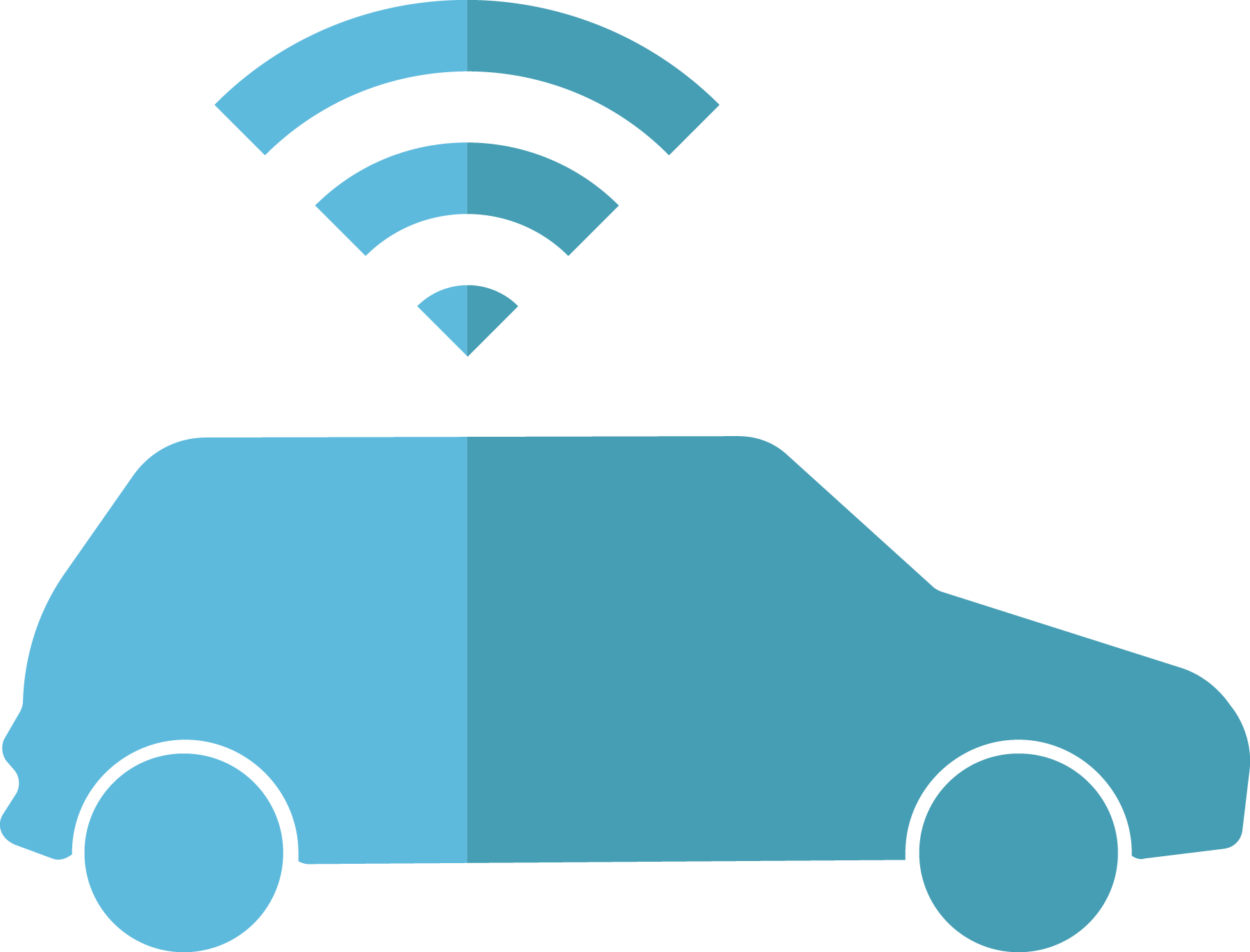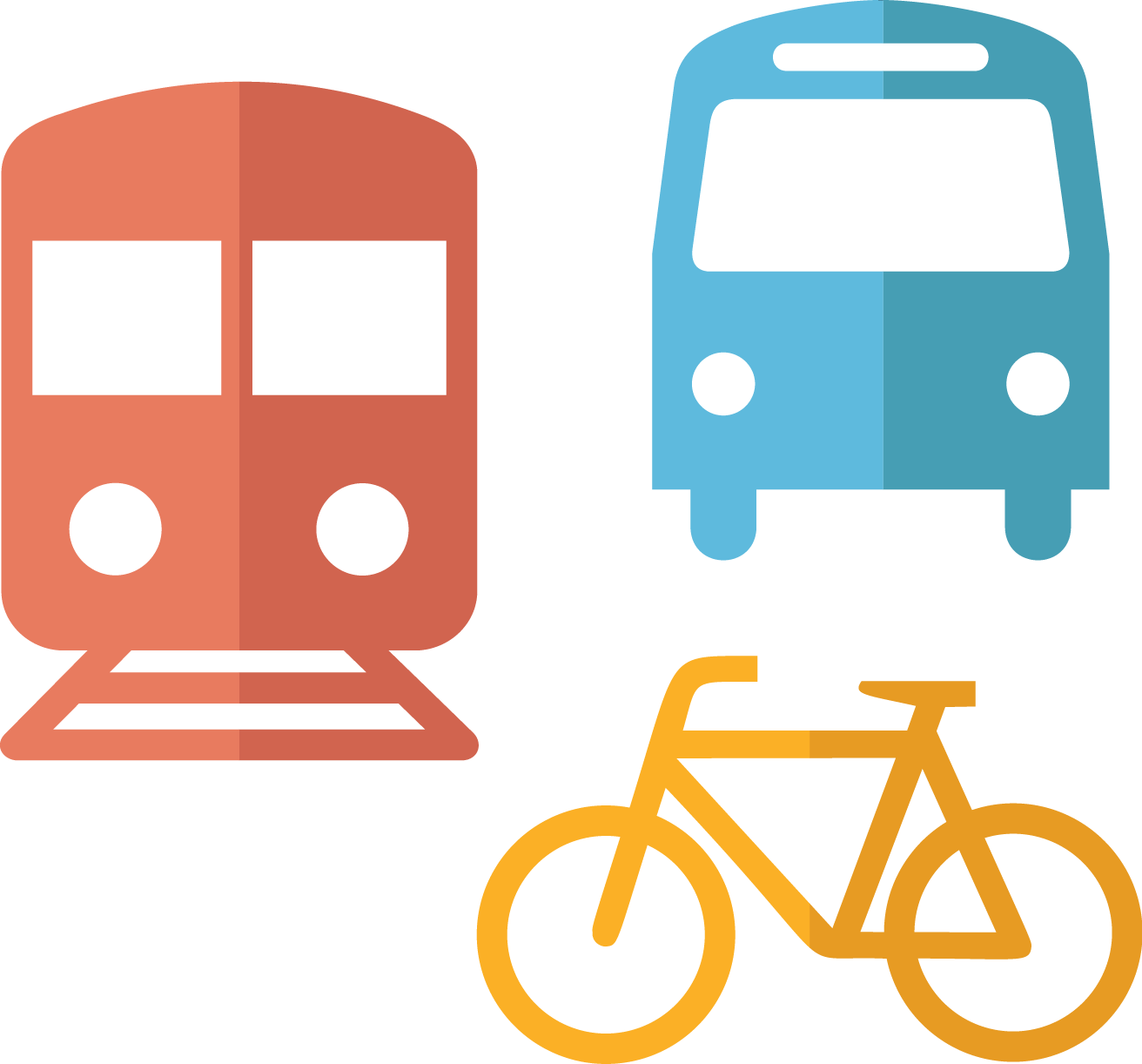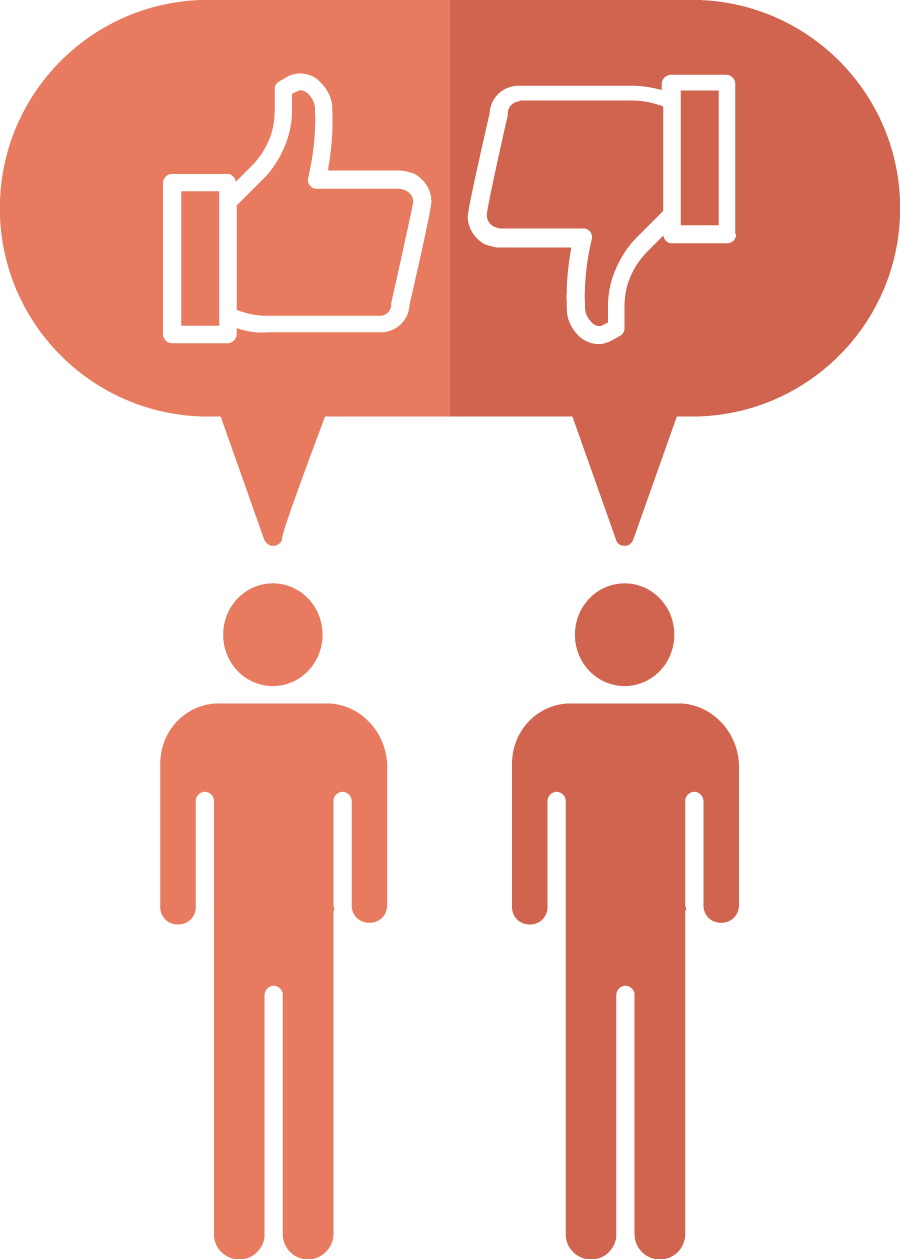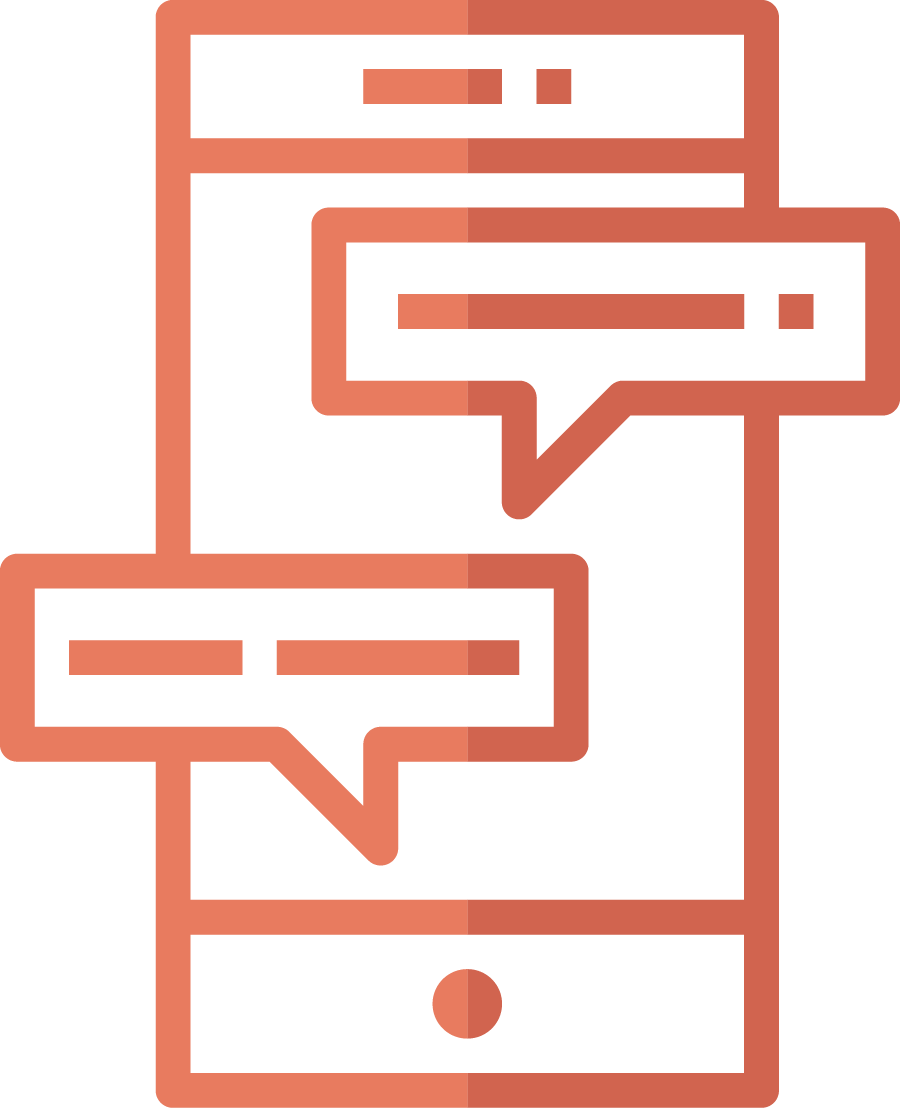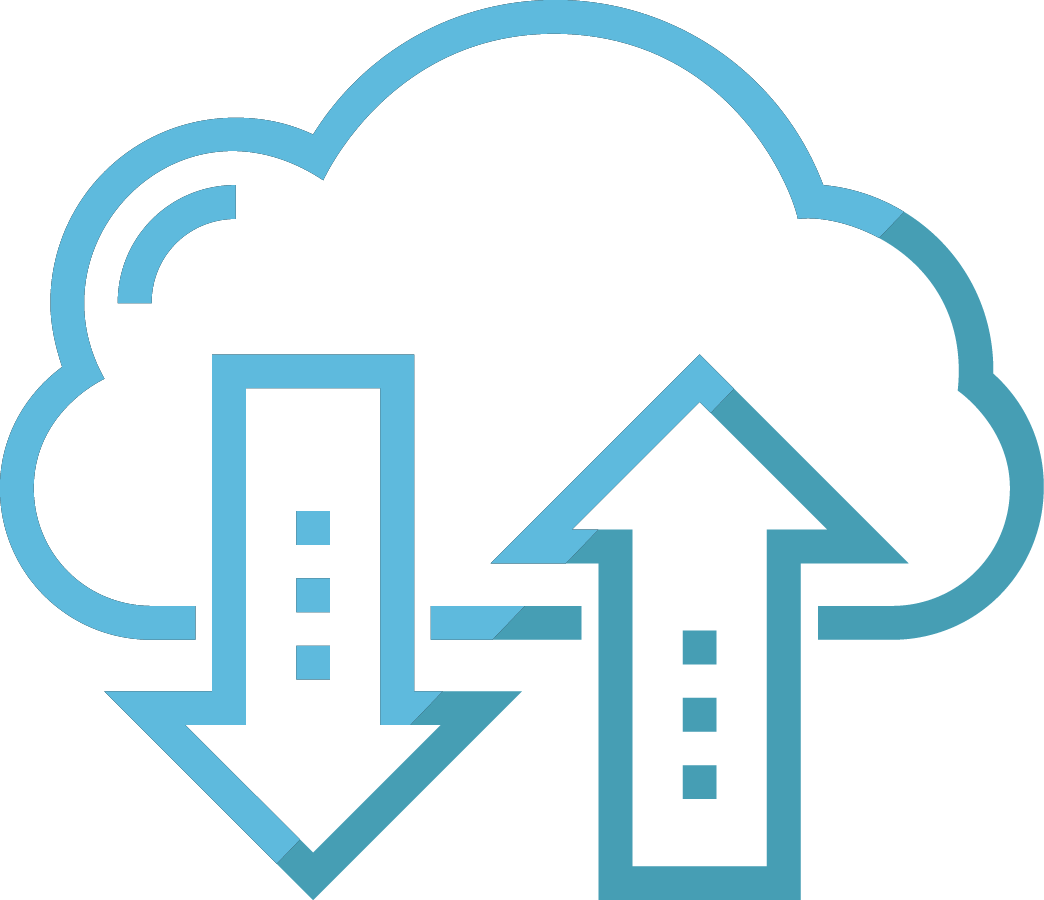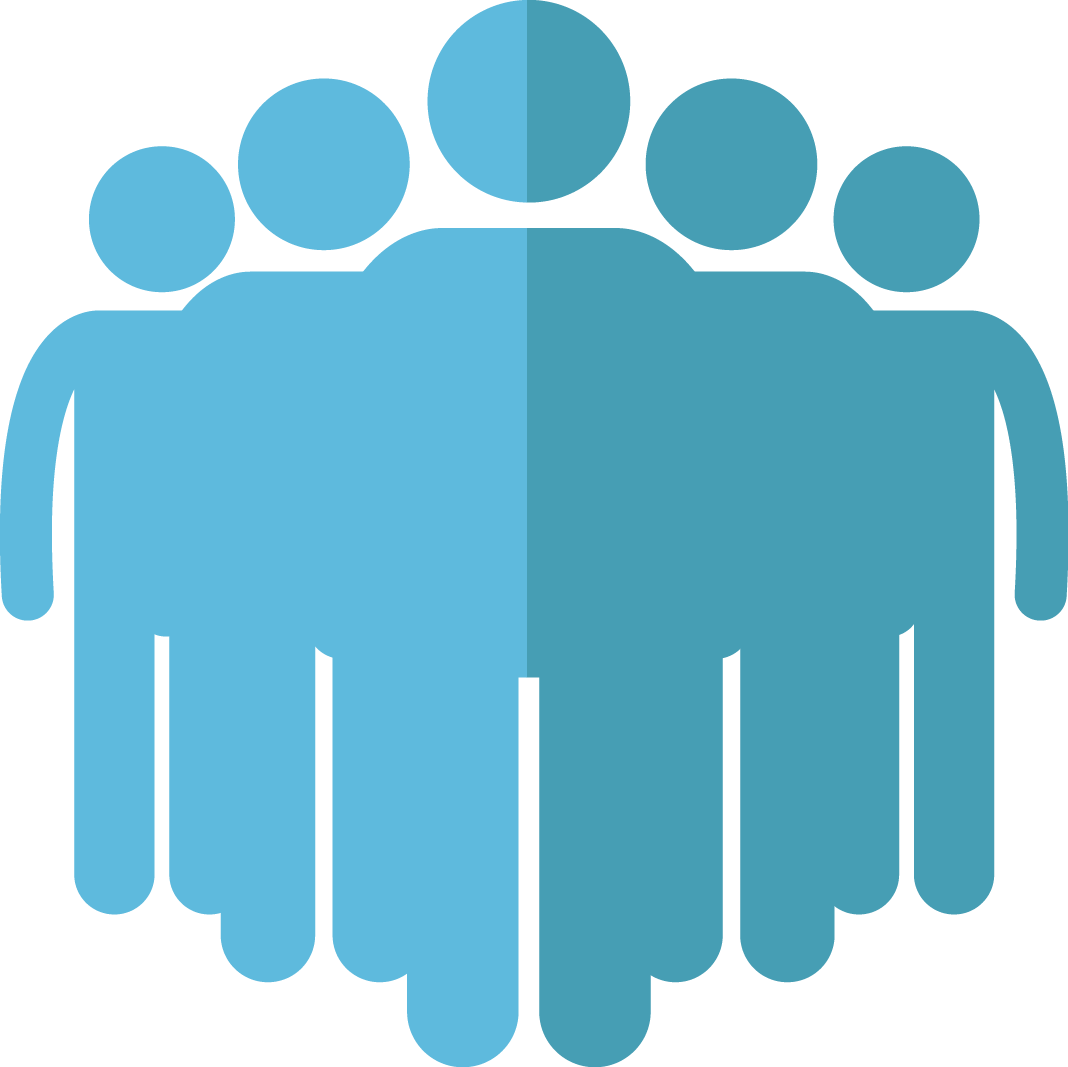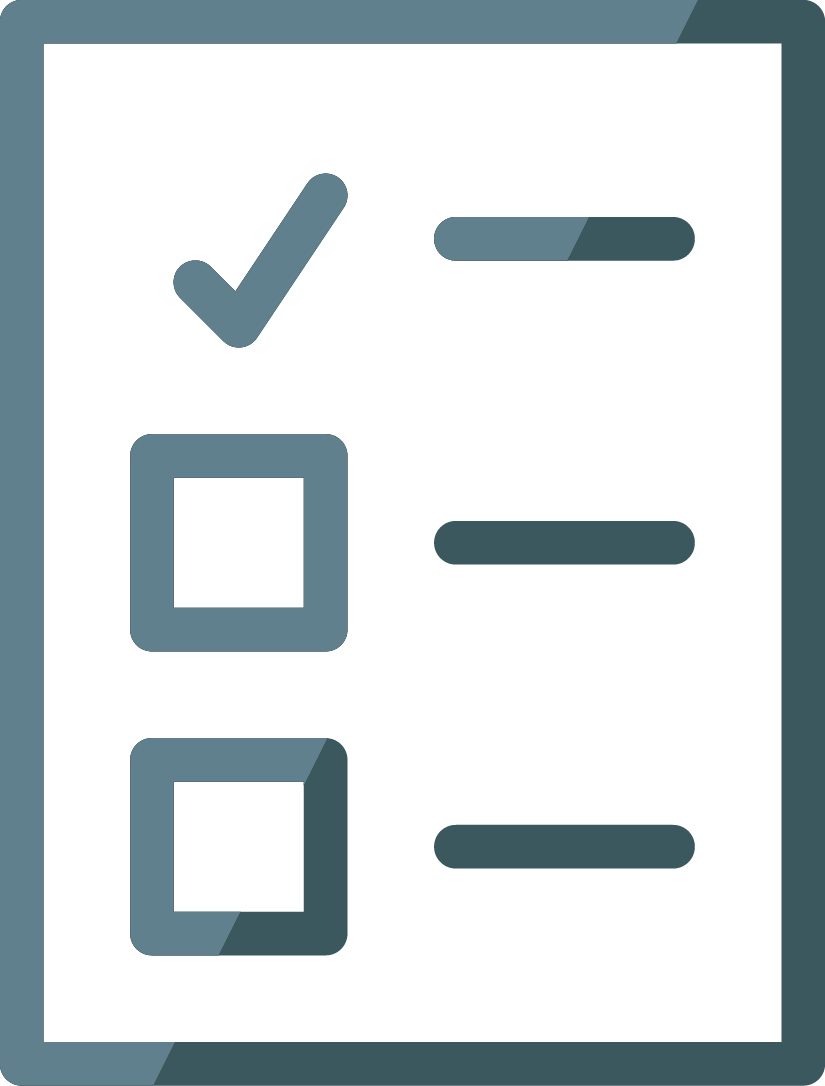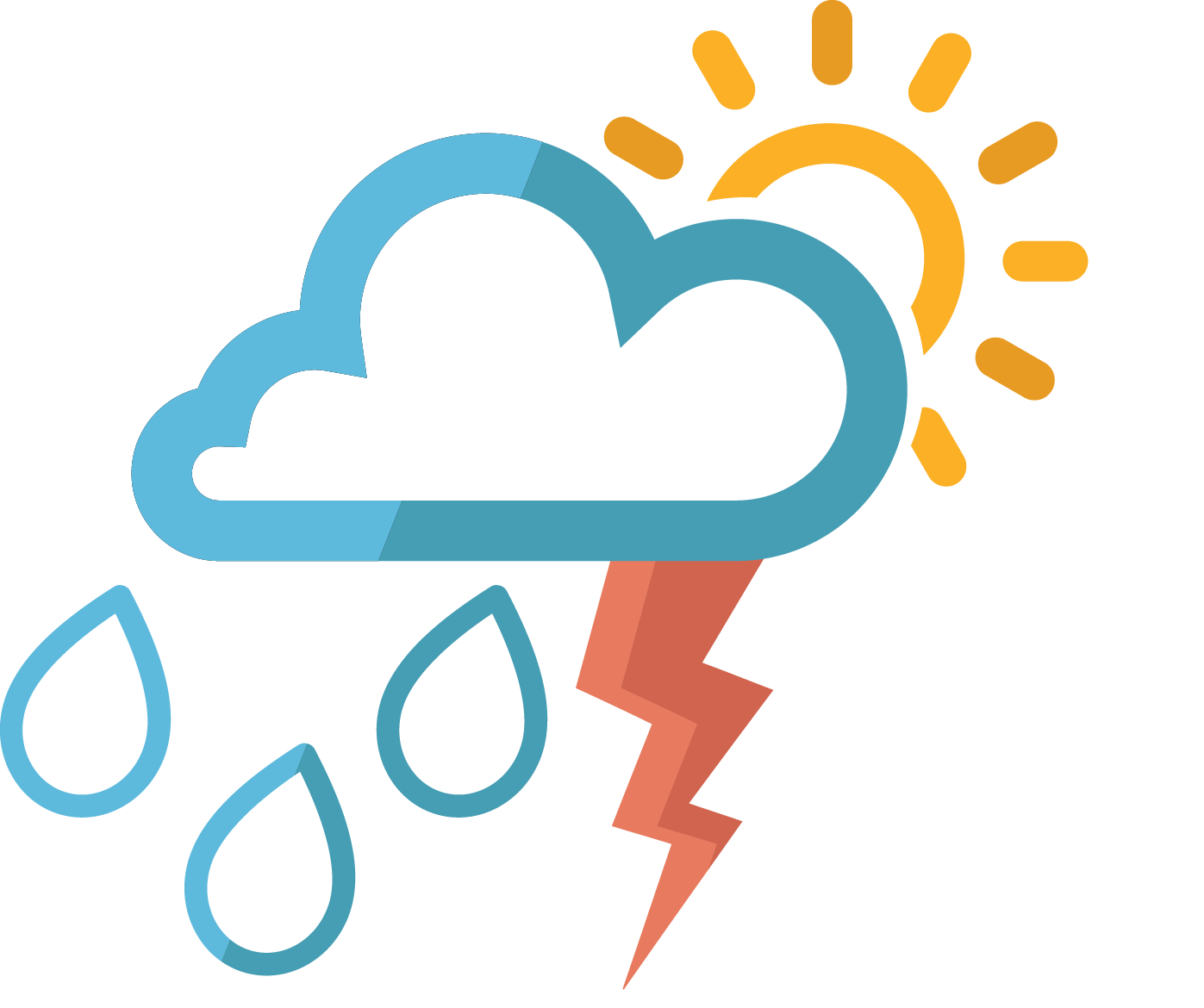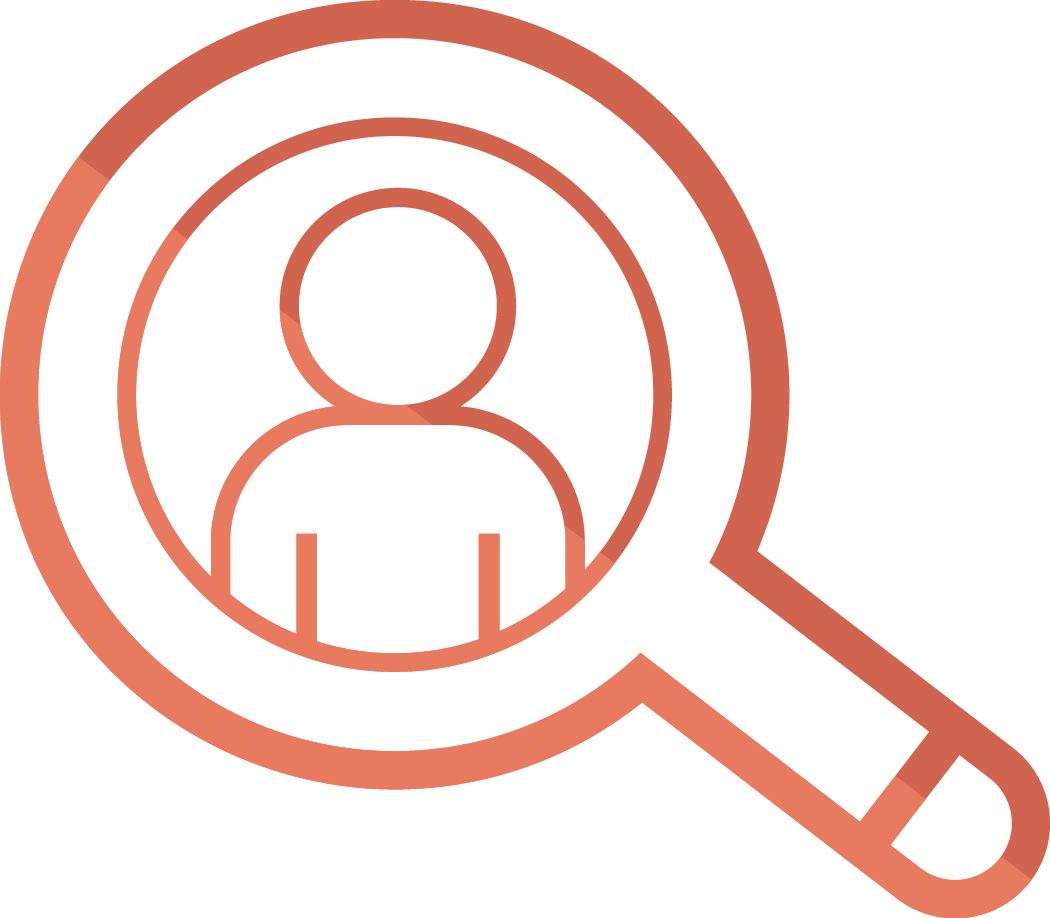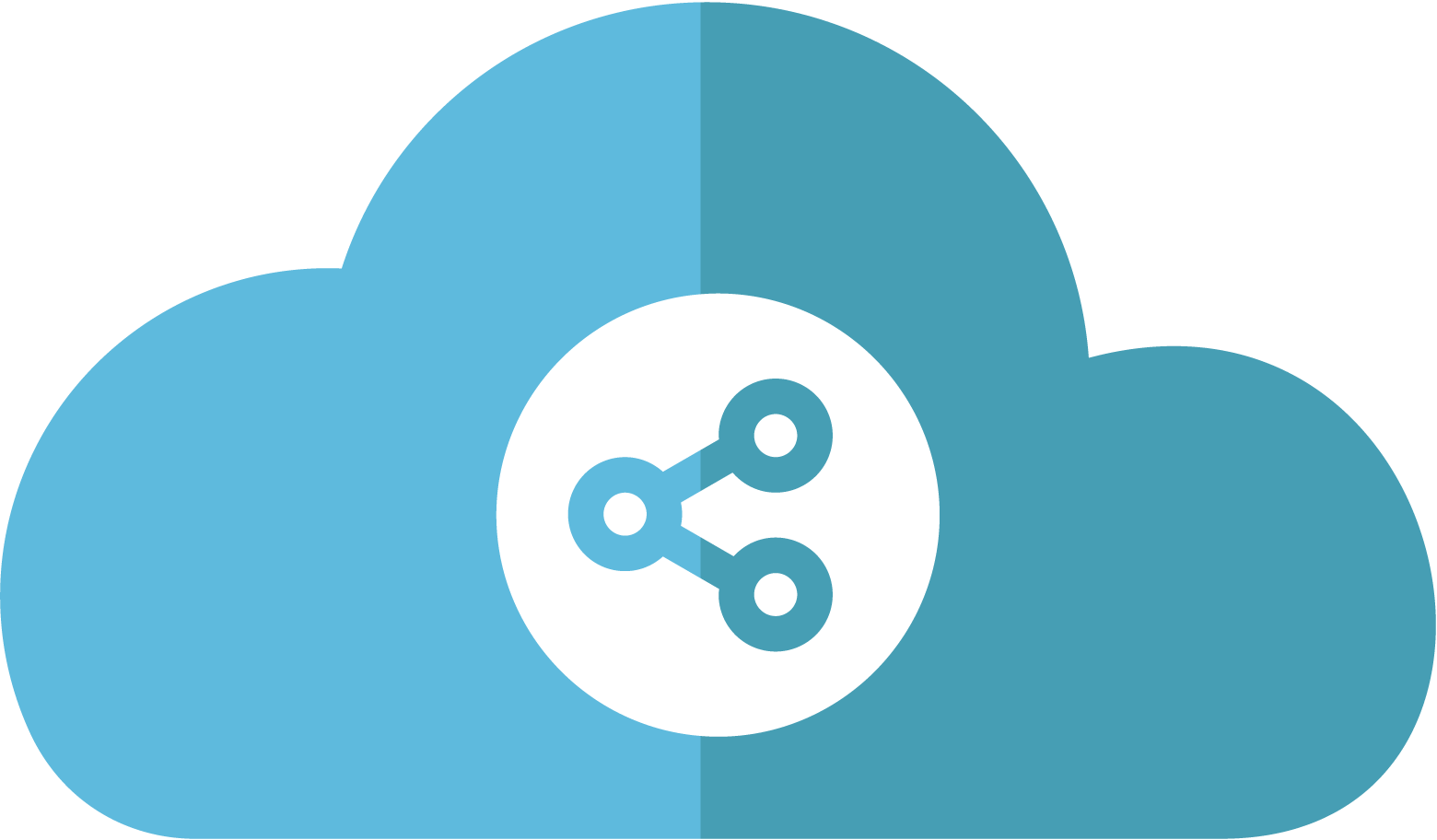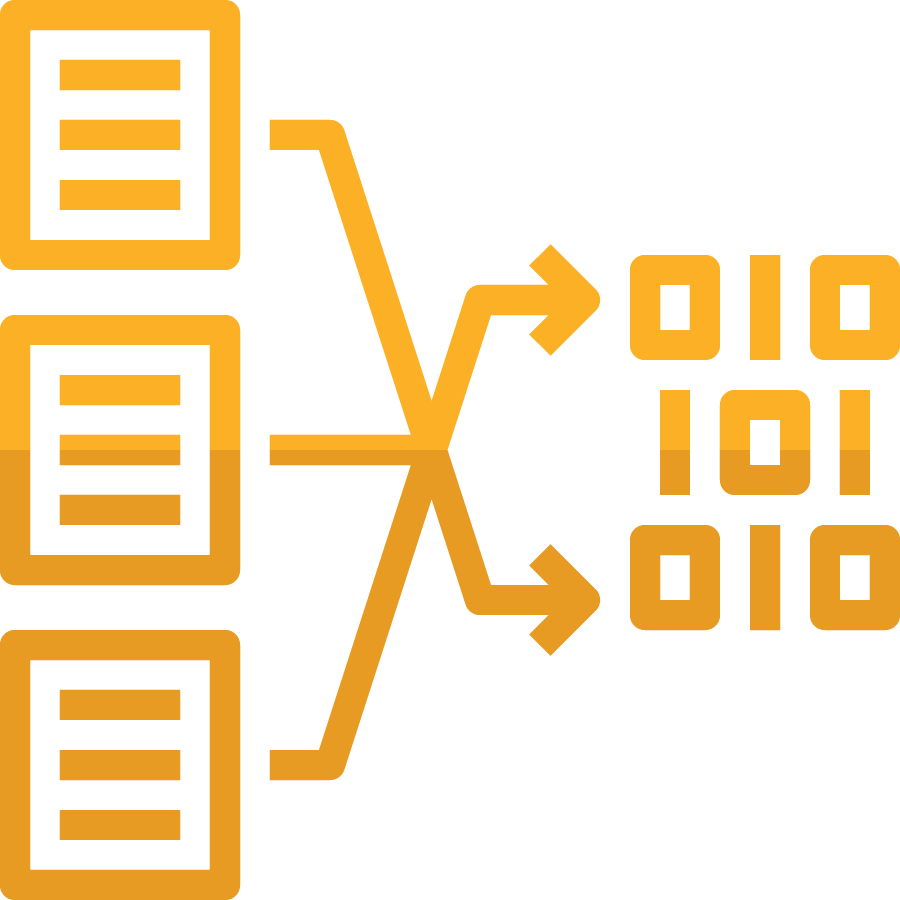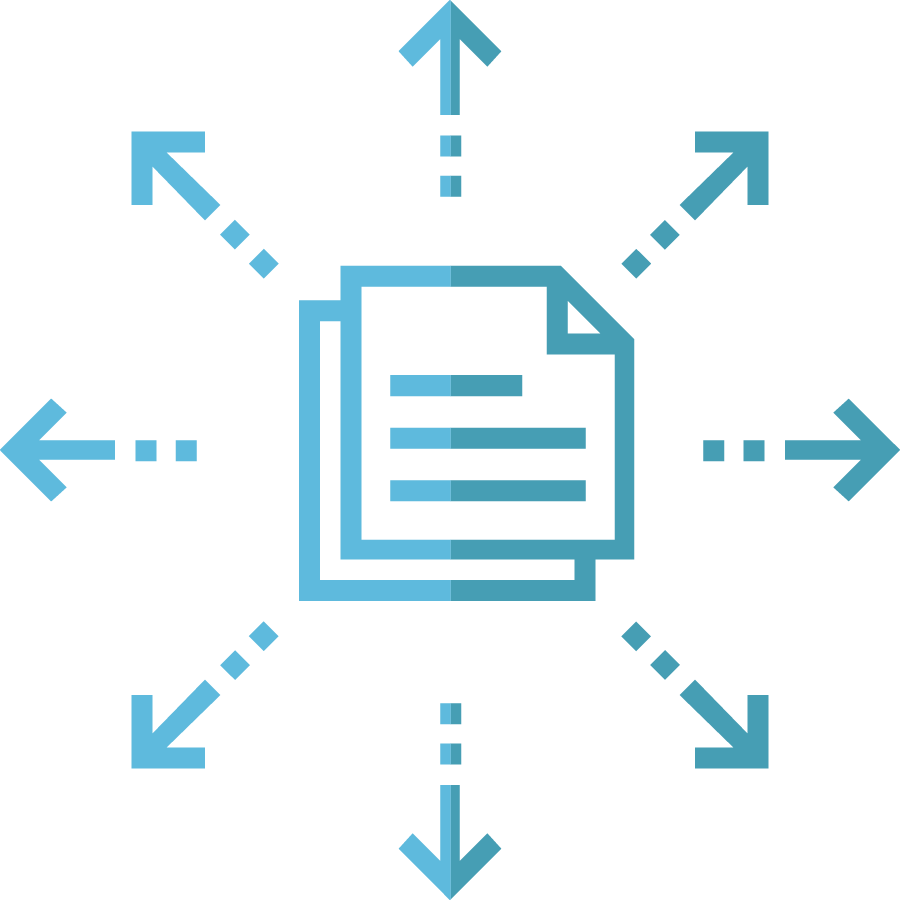The guidebook introduces the Agency Capability Building (ACB) framework, which provides a big picture view of the workforce, information, and technology trends and challenges DOTs face in developing and maintaining crucial capabilities for the future. The ACB framework consists of three components: Change Forces, Organizational Needs and Strategies.
Change Forces
Needs
The middle column of Figure 2.1 is the core of the ACB framework. These six Needs represent essential capabilities that transportation agencies must strengthen in order to respond to current and emerging changes in the environment.
Change forces are internal and external factors and trends affecting transportation agencies that disrupt the status quo. They are dynamic and evolving, and their impact can be positive or negative.
Change forces present new challenges and opportunities to an agency that it may not have faced before. Five different types of change forces have been identified in the ACB framework:
• Technology Advancement
• Legislation, Regulation and Funding
• Workforce Evolution
• Shift in DOT Role and Focus
• Public Expectations
Change forces generally impact transportation agencies in one of three ways. First, they may create new requirements or expectations to be met – or opportunities to be realized. For example, increasing public expectations for transparency mean that agencies must step up their communication activities. Second, they may impact the availability or nature of human and financial resources needed to deliver projects and services. For example, reduction in the supply of trained civil engineers means that agencies need to increase recruiting, training and outsourcing. Third, they may impact the validity of long-held assumptions that are at the foundation of planning and engineering methods. For example, the emergence of Transportation Network Company (TNC) services has had significant impacts on travel behavior.
The five types of change forces should be familiar to most transportation agencies – the role of DOTs has been evolving for the last several decades; each federal transportation funding bill has introduced new eligibility and reporting requirements; agencies have made great strides in taking advantage of new information and communication technologies. However, while the change forces are not necessarily new, they are by nature dynamic. They will be impacting transportation agencies in new and different ways in the future. Agencies that track the change forces and consider their likely impacts will be better equipped to overcome challenges and take advantage of new opportunities.
Each of the five Change Forces is described in detail below.
Adoption of new technologies has (and will continue to have) dramatic impacts on how people travel, how transportation systems operate, and how DOTs collect, create, share and use information. For example, DOTs have begun to improve the management and operation of transportation networks using techniques enabled by technology such as adaptive traffic signal control, dynamic lane reversal, dynamic shoulder use, adaptive ramp metering, dynamic pricing, integrated electronic payment systems and advanced traveler information systems.
New technology creates challenges and opportunities for transportation agencies that have far-reaching implications. Continued developments are expected in the areas of information technology (IT), data collection, transportation system management, transportation network companies (TNC) and Connected and Automated Vehicle (CAV) technology. In order to respond, agencies will need to rethink how they do business. They will need a multi-faceted plan for introduction of new technology that considers funding, maintenance and support, workforce skills and abilities, change management, partnerships, and internal management structures and methods. Some of the upcoming challenges and opportunities offered by new technology include:
• Data Collection and Management: It is now possible to quickly and efficiently collect much higher quality data using mobile scanners, remote sensing, drones, crowd sourcing and other methods. Improved technology enables significant increases in the amount of data available, but at the same time presents challenges in data management and makes it necessary for transportation agencies to carefully consider what data to collect and how it will be used to improve decision making.
• Analytics: New data sources and advances in data analysis can provide a better understanding of both transportation system and organizational performance for decision support. Advances occurring in artificial intelligence and machine learning, big data analytics and platform architectures offer opportunities for improved efficiency and effectiveness, but require specialized expertise.
• IT: Information technology continues to improve, with ever more powerful and compact computers, improved network connectivity, more efficient system deployment models and improved decision support. Social media applications are growing in use and sophistication, offering opportunities for new options for public involvement and knowledge transfer within and across agencies. Given the ease with which people can stay connected through telecommunications and videoconferencing technology, many staff will expect to be able to work from anywhere as well.
• Technology Infrastructure: Organizations are increasingly using the cloud for data storage. Information privacy and cybersecurity present growing challenges for agency IT staff. DOTs face an expectation by the public and staff that they will use the latest and most up-to-date technology, despite financial constraints and limited staff resources. Some agencies address this challenge through use of software-as-a-service and bring-your-own-device (BYOD) policies.
• Ride Sharing: Technology-enabled ride sourcing and ride sharing services offer travelers new options, and the long-term impacts on travel, transit and equity are not yet well understood.
• Energy: Advances in energy technology are changing the habits of drivers and creating new infrastructure needs, particularly for electric vehicles, that agencies need to consider. At the same time, these new energy technologies undermine the effectiveness of traditional transportation user fees such as the gas tax and will require DOTs to identify new methods of funding transportation.
• CAV: Agencies are just beginning to grapple with the range of technical and legal challenges associated with emerging CAV technologies and supporting infrastructure needs. Implications for highway design and capacity needs, lane markings, traveler information and cybersecurity are currently being studied. The improvements to safety and energy efficiency that this technology offers are driving the change.
Federal and state legislation and regulations have been and will continue to be significant change forces for DOTs, impacting funding levels, eligibility, flexibility, available financing methods, project planning and development processes, and reporting requirements. Most state DOTS have mechanisms in place to anticipate, prepare for, respond to and even sometimes influence those change forces. They are accustomed to the regular changes that inevitably come with a new administration, at either the state or federal level.
What is different in the current environment is the growing instability and uncertainty of transportation funding, both at the federal and state levels. Transportation user fees, such as gas taxes and registration fees, have provided stable, reliable and substantial highway and transit funding for decades, but that is no longer the case. It has been more than a decade since federal transportation funding has kept pace with transportation funding needs. That lack of sufficient funding, exacerbated by changing travel habits and increasing fuel efficiency, has repeatedly created federal funding shortfalls. According to the American Association of State Highway and Transportation Officials (AASHTO), since 2008, the federal Highway Trust Fund has been sustained through a series of General Fund transfers now amounting to $140 billion. The next federal funding gap, expected to reduce available federal transportation funding by 40 percent in 2021, has yet to be addressed. The situation is similar at the state level for many DOTs.
The funding instability transportation agencies face inhibits their ability to plan for the future. Efforts to reduce the size of the work force in response to both funding constraints and political pressure, coupled with new federal or state regulations, puts new pressure on state DOTS. For example, the most recent federal transportation authorization legislation (MAP-21/FAST) included new requirements for performance management and development of transportation asset management plans. Deadlines included in the federal legislation required state DOTs to implement new methods and technologies fairly quickly, straining limited staff resources. The continued layering of regulatory initiatives and process changes creates a challenging environment for DOTs working with limited resources.
Ultimately, the federal role in transportation funding may shift, with state legislation and funding gaining importance. Future federal changes may allow DOTs to use more creative funding arrangements, enable broader implementation of tolling, public/private partnerships, or devolution of the highway program to the states. The uncertainty surrounding these potential future shifts creates tension for DOTs between the relatively short-term planning of legislative bodies and the longer-term view necessary for DOTs to plan transportation systems that function for the future.
Public agencies face a genuine workforce crisis. The competition for technically strong, management-oriented staff is increasing as technology companies and other sectors outside of transportation seek the same skills in their employees. The current low unemployment rate increases competition for quality staff at all levels, and public agencies are often unable to compete with the private sector in terms of compensation. State DOTs will need to give serious consideration to the factors that make them a preferred work environment in order to continue to attract and retain talent, since a positive work environment is a major factor in the decision to join or stay at an organization.
Shifting demographics require state DOTs to demonstrate a strong sensitivity to and appreciation of the differences inherent in their workforce, which is becoming increasingly as diverse as the communities the DOTs serve. Many state DOTs work hard to value diversity, and Civil Service rules support such efforts. Growing numbers of women, people of color, people with disabilities, and people from different ethnic backgrounds may bring new management styles with them, and a new sensitivity for aspects of transportation that may have been overlooked in the past. In the future, an emphasis on achieving diversity in the DOT workforce and respecting and valuing different points of view may be increasingly important for recruiting new talent.
Changing age demographics may present one of the greatest and most predictable challenges to the state DOT, as experienced workers retire and new generations with different core values assume their workload. The popular descriptions of the generations predominant in the workforce today are generalizations that do not represent every staff person in those cohorts, but they help in a general way to describe the shifting attitudes to be expected in the workforce of the future:
• Baby Boomers (born in the years between WWII and the early 1960s): Many Boomers are now retiring, leaving behind an experience gap. They tend to be long-time employees, loyal to the agency. Even in retirement, they may still have skills to offer the DOT that will require new and creative arrangements outside full-time employment. The retirement of senior staff creates opportunities for the agency to reorganize, working and thinking in new ways.
• Gen Xers (those born in the mid to late 1960s and 1970s): Gen Xers are generally hard-working, independent, and resourceful but are skeptical of authority and tend to avoid undue attention. Their entrepreneurial tendencies and desire for work/life balance may challenge organizational norms created in the Interstate era after WWII. Many may be reluctant to take on management authority.
• Millennials (born in the 1980s and early 1990s): The Millennials are now the largest cohort in the general workforce. They tend to be highly tech-savvy and collaborative, and value work flexibility and work/life balance. They are motivated by purpose-driven work, which makes them a good fit for public service, if they can adjust to the rules and regulations inherent in government. They are highly competent and ambitious, and eager for greater responsibility. They tend not to stay in one organization for their entire careers, and may question those who do.
• Gen Z or Zoomers (born in the late 1990s and 2000s): It is too soon to know much about the work ethic of the newest cohort entering the workforce. However, Zoomers may be characterized by their exposure to global culture and their reliance on internet-connected smart phones and social media. It is likely that they too will value flexibility, work/life balance and early responsibility, but time will tell.
Adapting to shifting age demographics require new approaches. Younger staff bring new expectations for upward mobility and seek greater clarity and transparency about how to advance within the organization. State DOTs need to develop creative ways to attract them, and may need to adjust their organizational approach in order to keep them. Greater workforce mobility also requires the DOT to develop systematic approaches to build and transfer institutional knowledge.
In the Interstate era, building new infrastructure was the primary task for DOTs across the country. Large-scale construction of new highways was the norm, and their completion provided dramatically improved travel options for drivers and created photo opportunities for the public officials charged with funding those projects.
With the completion of the Interstate well in the past, now comes the challenge of maintaining both the quality of the infrastructure and the high-speed mobility that Interstates provide. Most DOTS are responsible for a large number of other roads as well. Given limited resources, one big challenge facing DOTs is how to maintain appropriate condition and service across the transportation network.
While DOTs continue to deliver capital projects, there is an increasing emphasis on operations and maintenance to make the most efficient use of existing capacity and maximize the life of physical infrastructure. New technology strengthens the DOT’s ability to improve mobility and safety without expanding highway capacity. A growing public emphasis on the use and importance of other modes, whether within the right-of-way or outside of it, also challenges traditional thinking about road construction. Finally, the increasing occurrence of extreme weather events is prompting agencies to consider retrofitting their transportation system to improve resiliency, and to gather condition data on previously under-examined highway elements, such as culverts, that play an important role when storms or flooding occur.
The shift away from new construction and expansion projects has and will continue to affect DOT organizational structures in the years to come. The growing focus on systems management and operations, incorporation of other modes and improving resiliency across modes requires new skills. These broader issues often cannot be addressed solely by the DOT. There is a continuing need to build and maintain partnerships and improve communication and coordination with a wide variety of agencies.
Public involvement in project development, project planning, construction implementation and long-range planning have long been part of the DOT’s responsibilities. Likewise, the public’s expectation for accountability and transparency are not new to DOTs, but those expectations are growing and evolving. The nature of public interactions is changing because of the options presented by new technology. State DOTs need to adapt, employing strategies that make the most effective use opportunities for public input.
For example, in response to increasing public concern about the impact of extreme weather and increased competition for natural resources, some DOTs have begun to adopt goals related to sustainability. Sustainability seeks to balance social, economic and environmental needs – considering both current and future generations. Meeting this “triple bottom line” requires agencies to rethink their mission(s) and operating principles. Stronger interagency partnerships, expanded public participation, and adoption of risk-based, adaptable decision-making processes are required.
Sustainability isn’t the only concern gaining public traction. The increase in the number and presence of other advocacy groups promoting multi-modal options, equity and equality in transportation, and public health initiatives such as active transportation, air quality and access to medical care add to the challenges facing DOTs.
Addressing these growing public expectations can be made easier with the use of technology. However, new technology initiatives must be carefully planned to ensure that supporting process changes and skills are in place. For example:
• Public Involvement: Technology offers new ways to involve the public in project development and long-range planning that may be more efficient and cost-effective than traditional “town hall” style public meetings. Legal requirements for public involvement may need an overhaul to allow the use of new methods while still ensuring that everyone in the public has an opportunity for comment. New skills may be needed at the DOT to identify and involve previously uninvolved segments of the public, as well as to gather, analyze and address a wider range of public input.
• “Real-time” Information: The public increasingly seeks better information access and real-time data accuracy, given the technology advancements occurring. This can be an opportunity for DOTs to better demonstrate performance progress and the value that transportation adds to the public good. It also presents workload challenges for DOTs and requires improvements to capabilities that enable more agile and efficient information delivery.
• Social Media: With the growth of social media such as Facebook and Twitter, state DOTs need to be increasingly customer-responsive. The ability to respond quickly and diplomatically to customer complaints – or kudos – on social media requires specific skills and can occupy a significant amount of staff time.
• Freedom of Information Act (FOIA) Requests: State DOTs have processes in place to respond to the specific requirements for transparency and timing specified by FOIA (as well as state-level public disclosure requirements). These requests are increasing, and some DOTs are putting in place “self-service” access to data and documents in order to reduce the need for staff time to respond to individual requests. However, agencies need to guard against inadvertently exposing private information that would otherwise be exempt from FOIA.
E-mails, databases and electronic documents are all subject to FOIA requests. The DOT may need to update its FOIA processes and policies to ensure exempt information remains private. DOTs will also need to improve efforts to ensure all staff are aware of the what data and documents can be shared.
• General Communication: The transition from paper to electronic information increases information access and can improve efficiency in managing communications. However, it also requires state DOTs to continually improve how they are communicating, keeping online information up to date, sharing information through electronic mailing lists, and expanding those lists to widen and improve communication. It may also require the DOT to update and review publication policies to ensure online information still complies with requirements of the Americans with Disabilities Act (ADA).
Organizational Needs consider the implications of anticipated changes. They identify the ways in which the agency should strengthen or add capabilities to meet future challenges and harness opportunities offered by these changes.
The second component of the ACB framework identifies the organizational implications of the various change forces for transportation agencies. They represent capability gaps to be filled in order to adapt to the new environment. There are six categories of needs:
• Aligning Skills to Needs
• Attracting & Retaining Workforce
• Agility & Resilience
• Technology Adoption
• Transparency
• Operations Focus
Collectively, these needs consider workforce skills and abilities; organizational functions supporting technology adoption, communication, business process modification and change management; and management styles that enable innovation and agility.
Creating a list of specific capability gaps helps to define the future target state for the agency, and is a necessary step for identifying suitable strategies for implementation.
Each of the six categories of Organizational Needs is described in detail in this section.
Adapting to the change forces discussed above will require DOTs to transform their workforces to include a different mix of employee skills and abilities.
Both “hard” and “soft” skills will be needed to handle changes in technology and the shift from capital intensive work to a more operations-centric and multimodal orientation.
• Hard skills include: project, contract, and vendor management; system operations; systems engineering; business process analysis; data analytics and data management; and understanding of federal rules and regulations.
• Soft skills include: collaboration; communication, including cross-generational and cross-cultural communication; adaptability; and conflict management.
General leadership and management skills are key to sustaining morale in the face of change and to managing an increasingly diverse workforce. Hard line management styles of the past will increasingly become a liability, as new staff seek more sympathetic management styles and mentoring relationships.
Aligning skills to needs is not a one-time effort; DOTs need to put in place an ongoing capability to track changing requirements, assess current and likely future gaps, and implement recruiting, staff development and potentially, outsourcing activities to address the gaps.
In the past, government pensions and health benefits were effective tools to attract and retain quality personnel. Those tools are dwindling; what worked in the past will not work in the future. Given the decline of pension benefits, increased competition for specialized skills, and the greater mobility of younger workers, DOTs need to employ new strategies to attract and retain talent.
State DOTs need to find new ways to “brand” themselves as desirable places to work and to promote the benefits of working for a public organization. To find employees with the skills needed for the future, agencies need to reach out in new and different ways, to new and different groups of people. New job descriptions or job categories are needed to find candidates with the appropriate skills, which may require DOTs to work closely with their state human resources/employment agencies to amend existing rules or practices.
Many state DOTs have already learned how to function with fewer staff, and are operating with limited bench strength for key functions. Because staff are less likely to spend their entire career at the DOT, it is vitally important that agencies have processes in place to quickly and effectively recruit and hire new people to fill vacancies.
Agility and resilience are related qualities. Agility means nimbleness and flexibility to adapt to new situations. Resilience is the ability to quickly recover following disruptions.
DOT’s need both of these qualities to respond to each of the change forces. They must be able to secure and deploy resources needed to respond to severe weather events and natural disasters – while continuing to deliver their normal programs and services. They must adapt their workforces to meet changing needs – while operating under tight funding constraints and hiring limitations. They must find ways to better collaborate across traditionally separate functional areas to meet new requirements. They must upgrade older technologies and take advantage of new technologies – while controlling costs, managing risks and minimizing disruption to the organization. They must plan, program and deliver projects while facing uncertainties in the long term funding picture.
While each of these examples is quite different, the common thread is the capability to gracefully adjust to evolving needs. Addressing this need requires multiple ingredients – including a coordinated and responsive leadership team, flexible position descriptions, flexible, task-order contracting vehicles, agile software development disciplines, and organization change management support.
DOTs need to expand their capability to rapidly and cost-effectively adopt new technology to take advantage of opportunities for improved efficiency and decision support.
This takes people with the right skills to both manage and execute technology-related projects, as well as people and processes for making wise technology investment decisions. DOT staff and managers will need the ability to determine whether to adopt the latest technologies based on an understanding of costs, benefits and risks.
Implementing new technology will also require improved collaboration among staff in different parts of the agency to ensure and maintain compatibility across systems and with external contributors or stakeholders.
Finally, it will require careful attention to cybersecurity risks and balancing these risks against delivering business value.
Legislative bodies the public expect public agencies to share information about how they are using taxpayer dollars – and what they are accomplishing. For the DOT, improved transparency can help to build public understanding, trust and support for the DOT’s work.
DOTs need to continue to improve how they communicate with the public, stakeholders and internal staff. They need to share information about how investment decisions are made, and report on the outcomes of those decisions. They also need to respond to the growing number of information requests. Building the capability for transparency requires a combination of leadership, communications expertise and infrastructure, process improvement supporting information sharing and dissemination, and staff training.
As DOTs put more emphasis on system operations and maintenance, they need to shift organization responsibilities and build staff competencies in system operations and supporting technologies. They also need to strengthen their ability to forge partnerships with other state agencies, other transportation agencies and operators, advocacy groups and the private sector.
Strategies are the means by which an agency can actively manage its organization, workforce, knowledge, information, data and relationships with stakeholders. They are the ways that DOTs can strengthen or build the organizational capabilities needed to deliver value to customers and stakeholders in a changing environment.
The third and final component of the ACB framework identifies strategies that can be used to build desired capabilities. Five broad categories of strategies are included:
• Organizational Management
• Workforce Management
• Knowledge Management
• Information and Data Management
• Partnerships
Each of these categories represents an individual discipline with a vast body of knowledge and many existing resources dedicated to its implementation. Therefore, the descriptions below are not intended to be comprehensive, but rather to provide practitioners with a general understanding of what they are and when they are helpful in building agency capabilities.
Organizational management strategies involve changes to organizational structure, roles, responsibilities or business processes. Some of these strategies can result in changes to the organizational structure, such as changing the ratio of staff, consultants and management personnel in an agency’s workforce. Some examples include:
• Reorganization of agency functions and creation of new organizational units
• Shifting of staff and resources to better where they are most needed
• Adoption of lean business processes to improve efficiency and effectiveness
• Deliberate change management to help the workforce adjust to new processes or systems
• Organizational performance monitoring and management using frameworks such as Baldrige or Balanced Scorecard
• Organizational culture change initiatives involving training, leadership modeling and reinforcement to support learning, innovation, and/or collaboration.
Workforce management strategies seek to align the workforce with the needs and goals of the organization. They are developed based on an understanding of current staffing, likely future changes due to retirement and attrition, and future needs. These strategies include:
• Workforce planning and position management to identify gaps in skills, and ensure that position descriptions reflect current job requirements.
• Professional development and training to improve and expand the skills of existing staff, including management personnel
• Recruiting and retention plans to attract staff with needed skills and retain them long-term
• Succession planning to minimize disruption caused by retirements and to eliminate key person dependencies
• Employee engagement efforts to improve staff morale and performance
Knowledge management includes strategies and methods for building and sustaining knowledge and experience of both employees and partners that will enable the agency to continue to carry out its mission efficiently and effectively despite disruptions or staff turnover. Common knowledge management strategies include:
• Mentoring, shadowing and apprenticeships to broaden staff skills and understanding
• Knowledge capture through expert interviews and after-action reviews
• Knowledge documentation such as desk manuals, business process diagrams and an archive of lessons learned
• Electronic knowledge bases such as portals, wikis, or content management systems
• Social and learning communities organized around specific topics of interest
• Coaching and training to cultivate a learning culture
Information and data management strategies need to address the full data and information life cycle, including planning, collection, creation, organization, use, storage, dissemination and disposal. Strategic planning related to data and information management can ensure that transitions to new data sources and adoption of new systems are accomplished in a coordinated fashion. Key information and data management strategies include:
• Developing a well-defined data governance structure to oversee data management policy, strategy and tactics
• Creation of strategic plans for information technology and data
• Establishment of an information architecture and standards to ensure consistency across the organization
• A plan for deployment of systems and processes for data integration to ensure implementation proceeds smoothly and involves all stakeholders
• Efforts to improve data access across the agency to reduce duplication and derive maximum value from data
• Improvements to reporting and analysis tools and methods
• Consistent management of records and content, incorporating search capabilities to facilitate information access
Building and managing external partnerships is a key strategy for state DOTs to access specialized skills, provide agility, leverage new technologies, share data, collaborate on special initiatives and maximize resources in a constrained funding environment. Partnership strategies can include:
• Use of public-private partnerships for specific types of work or projects; some DOTS have created a special office to facilitate innovative public/private partnerships
• Development of interagency agreements or Memoranda of Understanding to combine or leverage resources for a variety of purposes
• Development of data sharing agreements between agencies to reduce collection costs
• Establishment of partnerships with Universities or private firms to provide capabilities that would be difficult to develop or sustain within the DOT
